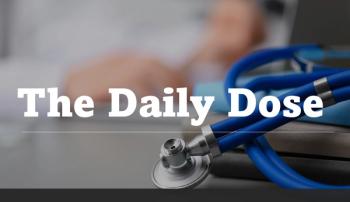
Social Determinants of Health Affect Use of HRT During Menopause, Study Suggests
Social determinants including partner status, smoking history, and BMI were significantly associated with reduced access to effective hormone therapy for menopausal women.
A study of nearly 2,000 women in midlife reveals that social determinants of health (SDOH) significantly influence access to menopausal hormone therapy, with women who have higher education, stable partnerships, and healthier dietary habits more likely to receive treatment for menopause symptoms, the authors reported.
The research demonstrates that protective social factors correlate with increased hormone therapy use, while women with higher BMI, lower education levels, smoking history, and single relationship status face reduced access to this effective treatment. The findings were published in The Biology of Sex Differences.
The findings highlight a critical gap in equitable menopause care at a time when an estimated 1.3 million American women enter menopause annually, lead author Stephanie Faubion, MD, MBA, chair of the department of medicine at the Mayo Clinic in Jacksonville, Florida, and colleagues stressed. Despite hormone therapy's established effectiveness for treating vasomotor symptoms like hot flashes and night sweats, studies show that 81% of postmenopausal women experiencing these symptoms have never received hormone therapy, and half delay seeking care for more than 6 months.2 Previous research has linked SDOH to various women's health outcomes, including mental health, chronic disease risk, and pregnancy complications,3 but their impact on menopause treatment access remained largely unexplored, a data gap that drove the current research.
Faubion et al surveyed women aged 45-60 who received primary care at 4 Mayo Clinic locations between March and June 2021. The cross-sectional study examined electronic medical records for demographic information and self-reported social determinants of health data, including exercise levels, stress, social interactions, abuse history, ability to pay for basic needs, diet, alcohol intake, smoking status, and dental care access. Participants reported their current use of systemic hormone therapy for menopause symptoms through the study questionnaire.1
The analysis included 1,988 women who completed both the survey and social determinants questionnaire within 2 years. Participants averaged 54.4 years of age with a mean body mass index (BMI) of 30.2 kg/m², and 97% identified as White. Only 258 women (13%) reported current systemic hormone therapy use. Investigators used univariate logistic regression to measure associations between social determinants and hormone therapy use.1
FINDINGS
The research team reported several significant predictors of reduced hormone therapy access. Each 1-unit increase in BMI decreased the odds of hormone therapy use by 3% (OR = 0.97, 95% CI 0.95–0.99). Women who did not have partners had 34% lower odds of using hormone therapy compared to those who identified themselves as married or with a partner (OR = 0.66, 95% CI 0.45–0.99). The impact of education level was particularly striking, the authors said: women with high school education or less were 55% less likely to use hormone therapy compared to those with postgraduate studies (OR = 0.45, 95% CI 0.24–0.85), while the odds for those with some college or 2-year degrees were 31% lower (OR = 0.69, 95% CI 0.49–0.96).1
Smoking status also significantly affected treatment access. Current smokers had 62% lower odds of hormone therapy use compared to never-smokers (OR = 0.38, 95% CI 0.18–0.83), while former smokers had 29% lower odds (OR = 0.71, 95% CI 0.52–0.96). Conversely, and a small detail of telling importance, women who used extra virgin olive oil as their main dietary fat showed 46% higher odds of hormone therapy use (OR = 1.46, 95% CI 1.10–1.94), suggesting that access to healthy foods and health literacy may facilitate treatment access.1
The study's predominantly White, insured population with existing healthcare access represents a conservative estimate of social determinants' impact on hormone therapy access, Faubion et al point out. They note that women of color and marginalized groups, who typically face greater social determinant challenges, likely experience even more significant barriers to menopause care.1 Previous research supports this interpretation, showing that non-White populations experience higher rates of food insecurity, housing instability, and uninsured status.4
The EVOO Connection
The relationship between olive oil use and hormone therapy access illustrates the complex interplay between health literacy, socioeconomic status, and treatment decisions. The researchers suggested that extra virgin olive oil's higher cost compared to other fats may serve as a marker for both financial resources and nutritional knowledge. Combined with the education findings, these results suggest that health literacy plays a crucial role in navigating hormone therapy decisions, particularly given lingering public concerns about safety following the 2002 Women's Health Initiative trial results, they wrote.1
Among the study's limitations, Faubion and colleagues point to its cross-sectional design and 16.1% response rate as risks for potential sampling bias toward women with more significant menopause experiences. The predominantly White population and healthcare-connected participants may underestimate social determinants' true impact on treatment access. The team called for future research to examine these relationships in more diverse populations without regular healthcare access and explore whether women with unfavorable social determinants face additional contraindications to hormone therapy.1
In their conclusion, Faubion et al state that their findings underscore the need for culturally responsive menopause care that addresses the diverse factors influencing women's treatment experiences. "To assure equitable
menopause treatment for all women, clinicians should evaluate and address SDOH with their female patients in midlife in a culturally responsive manner, the authors wrote. This should follow frameworks that incorporate cultural curiosity, respectful inquiry, and connected care. Patient-centered approaches that empower women to participate in their care decisions can help address the social factors that ultimately impact menopause treatment access and create more equitable care delivery across all populations.1
References
1. Kling JM, Abraham AE, Kapoor E, et al. Associations of social determinants of health on likelihood of systemic hormone therapy use in midlife women. Biol Sex Differ. 2025;16(37). doi:10.1186/s13293-025-00720-9
2. Nappi RE, Kroll R, Siddiqui E, Stoykova B, Rea C, Gemmen E, et al. Global
cross-sectional survey of women with vasomotor symptoms associated
with menopause: prevalence and quality of life burden. Menopause.
2021;28(8):875–82.
3. Namazi M, Sadeghi R, Behboodi Moghadam Z. Social determinants of health in menopause: an integrative review. Int J Womens Health. 2019;11:637–47
4. Town M, Eke P, Zhao G, et al. Racial and ethnic differences in social determinants of health and health-related social needs among adults — Behavioral Risk Factor Surveillance System, United States, 2022. MMWR Morb Mortal Wkly Rep. 2024;73(9):204–8.
Newsletter
Enhance your clinical practice with the Patient Care newsletter, offering the latest evidence-based guidelines, diagnostic insights, and treatment strategies for primary care physicians.



















































































































































































































































































